19/09 - 08/11, 2008
-
Simon Dybbroe Møller
NOT NATURE NEAR
Dybbroe Møller ushers us into an archaeology of the present, so to speak, taking the language of Minimal Art as his preferred starting point. His investigation into shape leads the artist to completely unexpected results in which the rationality of geometrical shapes is again and again betrayed by the search for the unforeseen, the fortuitous. Simon Dybbroe Møller reflects upon the creative value of error, negation and subtraction, taking them as preferred artistic practice.
In his first solo show in Italy, the artist presents large-scale installations.
The vetrine of the gallery hosts the artwork Waiting for different times where many different plinths are piled up creating a big installation with unsettled balance. The pedestals with their strong colors and the unusual shapes look like the 80’s style and seem to be stored waiting for another exhibition, waiting to be back into fashion.
At the same time the work evokes the idea of our memory, the way the thoughts and the memories are simply stored and suddenly reappear in an unexpected time.
In the main room there is an awe-inspiring structure made up of metal tubes, Mass, Weight and Volume (Fallen into Place) is a kind of Mikado of revisited dimensions and materials. Dybbroe Møller replaces the traditional wooden sticks with long, heavy metal tubes to create a complex game of balance. The artist’s chaotic displaying of the elements suggests the randomness of the move which traditionally opens this ancient Chinese pastime, that is the arbitrary dropping of the sticks, an act which in this work becomes purely conceptual given the size and weight of the poles used.
In the second room the artist present 13 problems, the starting point for these sculptures is a suggestion during a Simon Dybbroe Møller’s visit at Metropolitan Museum of New York.
He looked at the pedestals and started to think about a kind of misleading sculptures, just empty pedestals able to suggest the idea of holding many different objects and at the same time of being artworks themselves.
The artist creates a light, playful, unmonumental sculptures, 13 problems as 13 questions without a sure answer.
Curtain for Louisiana (No More Moore) is a wide hand-drawn curtain, a veil scored with closely drawn pen strokes, using a simple biro, which when placed in front of the gallery windows blocks out any external view. The title No More Moore describes the artist’s conceptual purpose which aims to hide, metaphorically speaking, one’s viewing of Henry Moore sculptures. The curtain matches the size of the main window at the Louisiana Museum of Modern Art in Copenhagen. Dybbroe Møller hangs up a virtual veil in order to obscure one’s view of the museum’s sculpture park in which Henry Moore’s artwork is exhibited. The purpose of the work is to blot out Moore, a process of subtraction underlined by the choosing to print the artist’s biro strokes so as to conceal a paper reproduction of the sculptor’s work on the curtain.
The artist obscures a part of the view trying systematically to hinder memory, a recollection which is, by its very nature, rather difficult to blot out, like the shapes of one of the last century’s most well-known sculptors, Henry Moore.
Simon Dybbroe Møller elaborates an expressive universe in which logic, nostalgia, reason and memory live side by side; poetics which defy easy definition, and recall Sol LeWitt’s famous assertion that “Conceptual artists are mystics rather than rationalists”.
Dybbroe Møller ushers us into an archaeology of the present, so to speak, taking the language of Minimal Art as his preferred starting point. His investigation into shape leads the artist to completely unexpected results in which the rationality of geometrical shapes is again and again betrayed by the search for the unforeseen, the fortuitous. Simon Dybbroe Møller reflects upon the creative value of error, negation and subtraction, taking them as preferred artistic practice.
In his first solo show in Italy, the artist presents large-scale installations.
The vetrine of the gallery hosts the artwork Waiting for different times where many different plinths are piled up creating a big installation with unsettled balance. The pedestals with their strong colors and the unusual shapes look like the 80’s style and seem to be stored waiting for another exhibition, waiting to be back into fashion.
At the same time the work evokes the idea of our memory, the way the thoughts and the memories are simply stored and suddenly reappear in an unexpected time.
In the main room there is an awe-inspiring structure made up of metal tubes, Mass, Weight and Volume (Fallen into Place) is a kind of Mikado of revisited dimensions and materials. Dybbroe Møller replaces the traditional wooden sticks with long, heavy metal tubes to create a complex game of balance. The artist’s chaotic displaying of the elements suggests the randomness of the move which traditionally opens this ancient Chinese pastime, that is the arbitrary dropping of the sticks, an act which in this work becomes purely conceptual given the size and weight of the poles used.
In the second room the artist present 13 problems, the starting point for these sculptures is a suggestion during a Simon Dybbroe Møller’s visit at Metropolitan Museum of New York.
He looked at the pedestals and started to think about a kind of misleading sculptures, just empty pedestals able to suggest the idea of holding many different objects and at the same time of being artworks themselves.
The artist creates a light, playful, unmonumental sculptures, 13 problems as 13 questions without a sure answer.
Curtain for Louisiana (No More Moore) is a wide hand-drawn curtain, a veil scored with closely drawn pen strokes, using a simple biro, which when placed in front of the gallery windows blocks out any external view. The title No More Moore describes the artist’s conceptual purpose which aims to hide, metaphorically speaking, one’s viewing of Henry Moore sculptures. The curtain matches the size of the main window at the Louisiana Museum of Modern Art in Copenhagen. Dybbroe Møller hangs up a virtual veil in order to obscure one’s view of the museum’s sculpture park in which Henry Moore’s artwork is exhibited. The purpose of the work is to blot out Moore, a process of subtraction underlined by the choosing to print the artist’s biro strokes so as to conceal a paper reproduction of the sculptor’s work on the curtain.
The artist obscures a part of the view trying systematically to hinder memory, a recollection which is, by its very nature, rather difficult to blot out, like the shapes of one of the last century’s most well-known sculptors, Henry Moore.
Simon Dybbroe Møller elaborates an expressive universe in which logic, nostalgia, reason and memory live side by side; poetics which defy easy definition, and recall Sol LeWitt’s famous assertion that “Conceptual artists are mystics rather than rationalists”.
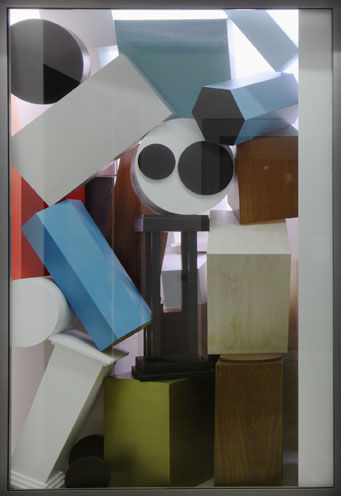 Waiting for different times, 2008Wood, acrylics
Waiting for different times, 2008Wood, acrylics
Size variable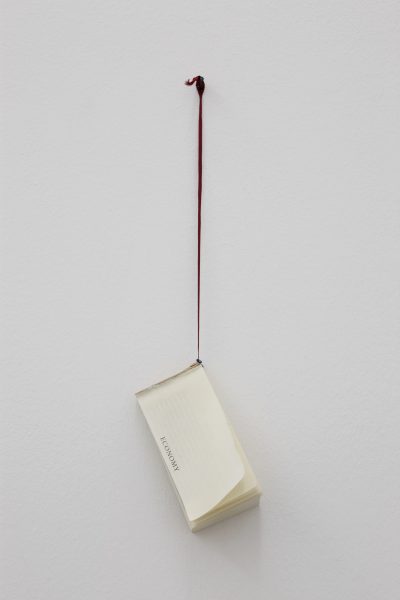 Economy, 2008Book
Economy, 2008Book
40×12×5,5 cm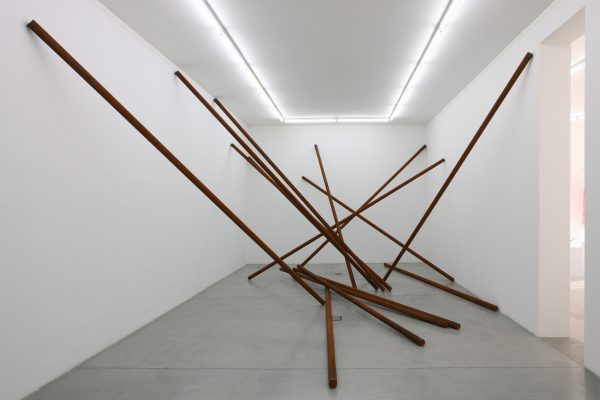 Mass, Weight and Volume (Fallen into place), 2008Steel
Mass, Weight and Volume (Fallen into place), 2008Steel
420×900×570 cm
Edition 3/3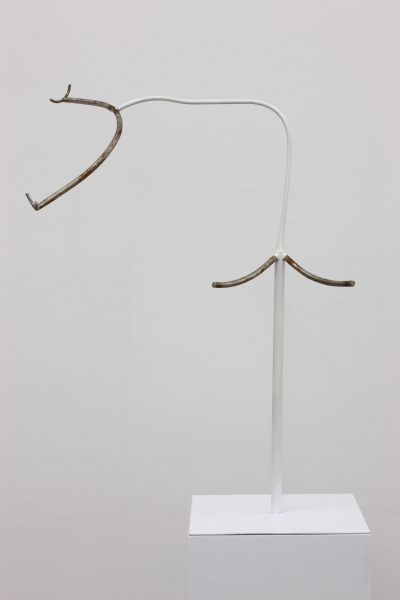 13 Problems # 1, 2008Varnish, metal
13 Problems # 1, 2008Varnish, metal
57×52×77 cm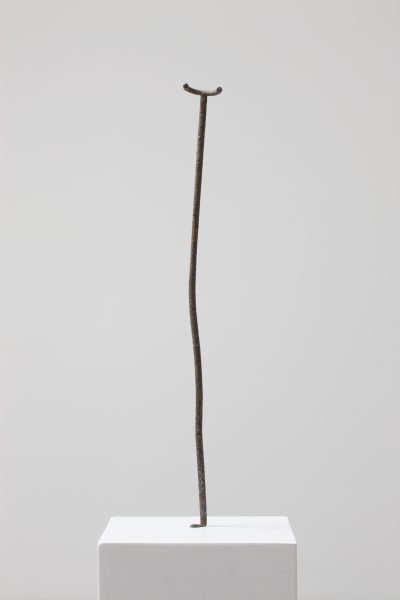 13 Problems # 2, 2008Varnish, metal
13 Problems # 2, 2008Varnish, metal
4,5×3×50 cm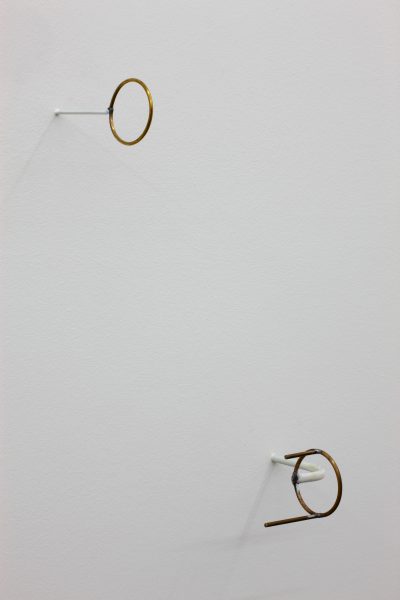 13 Problems #3, 2008Varnish, metal
13 Problems #3, 2008Varnish, metal
55×35×17 cm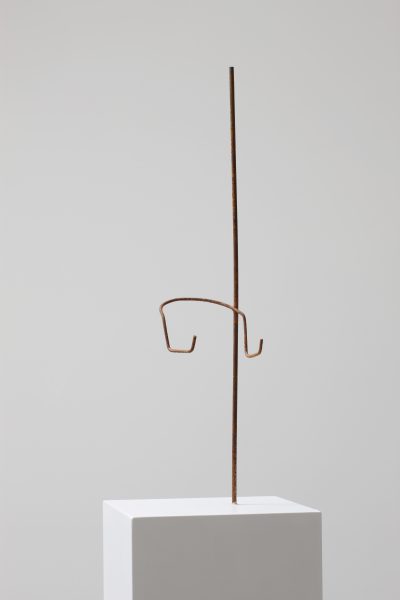 13 Problems # 4, 2008Varnish, metal
13 Problems # 4, 2008Varnish, metal
14×16×55 cm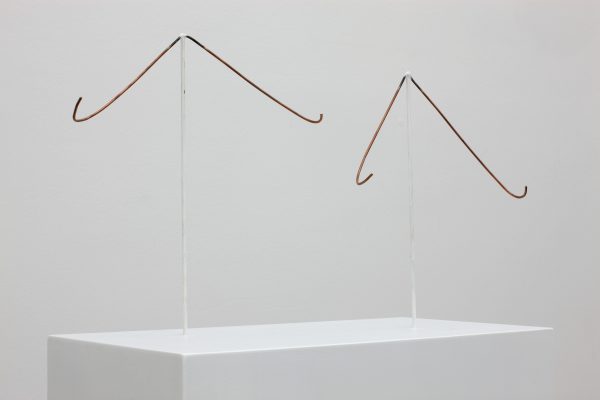 13 Problems #5, 2008Varnish, metal
13 Problems #5, 2008Varnish, metal
35×55×15 cm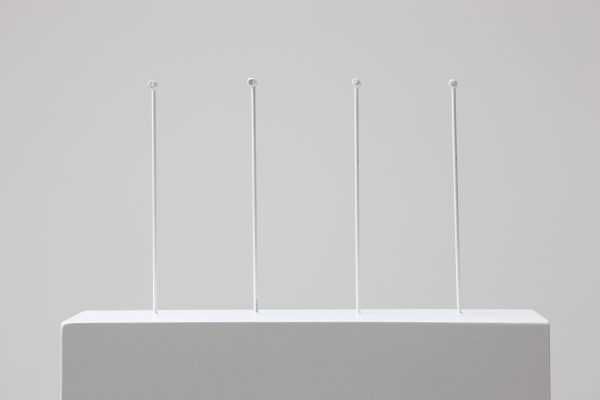 13 Problems #6, 2008Varnish, metal
13 Problems #6, 2008Varnish, metal
23×30×4 cm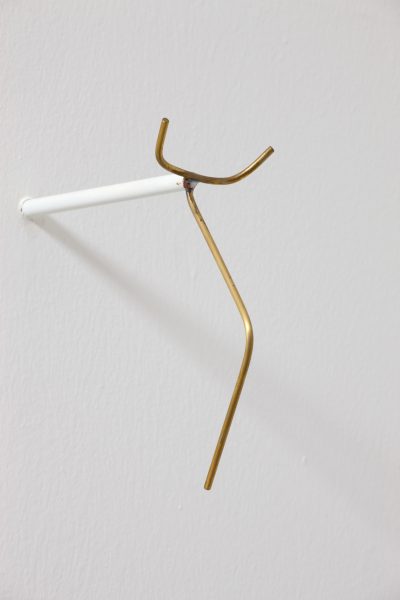 13 Problems # 7, 2008Varnish, metal
13 Problems # 7, 2008Varnish, metal
8×8×20 cm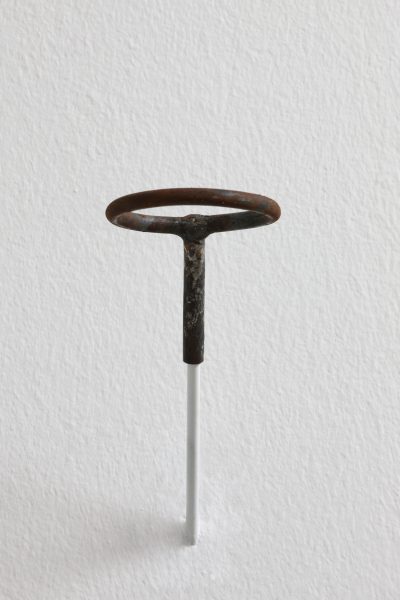 13 Problems # 8, 2008Varnish, metal
13 Problems # 8, 2008Varnish, metal
8×16×13 cm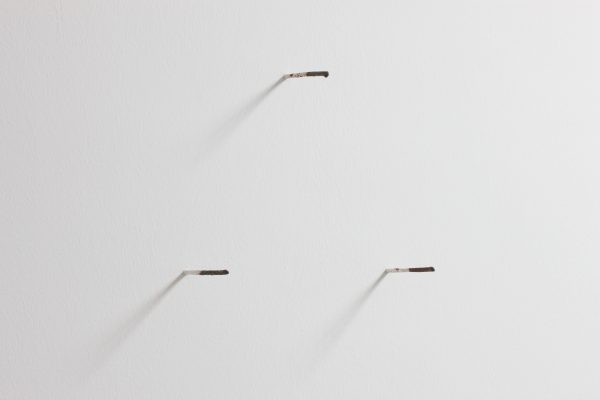 13 Problems # 9, 2008Varnish, metal
13 Problems # 9, 2008Varnish, metal
30×12×27 cm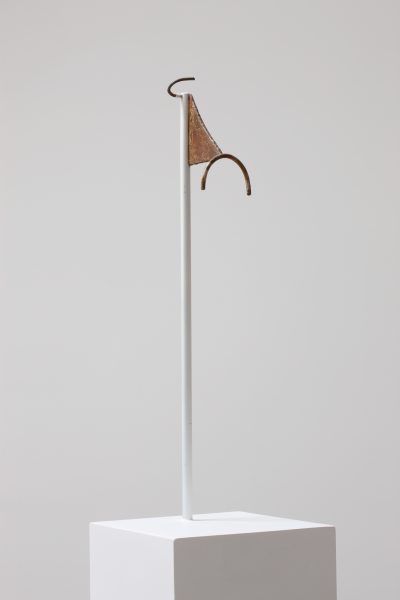 13 Problems # 10, 2008Varnish, metal
13 Problems # 10, 2008Varnish, metal
5×13×52 cm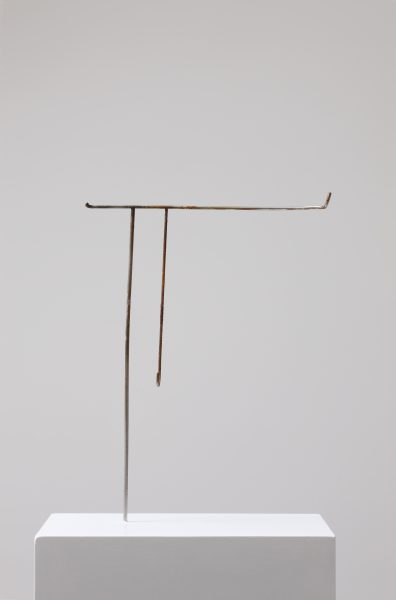 13 Problems # 11, 2008Varnish, metal
13 Problems # 11, 2008Varnish, metal
37×5×47 cm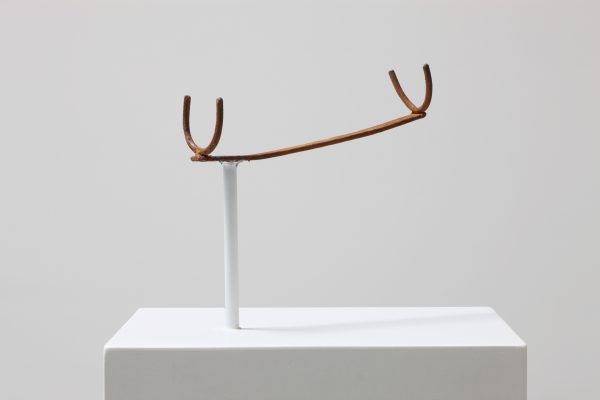 13 Problems # 12, 2008Varnish, metal
13 Problems # 12, 2008Varnish, metal
25×6×20 cm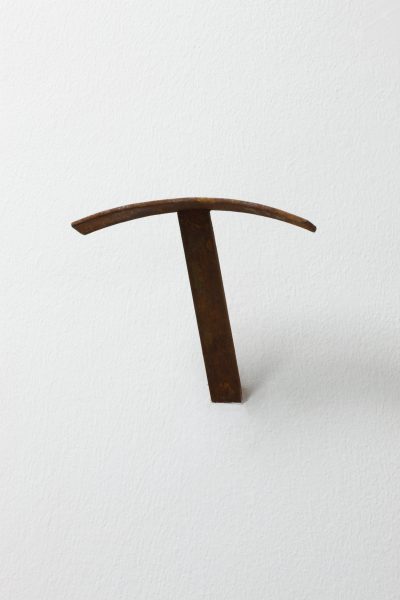 13 Problems # 13, 2008Varnish, metal
13 Problems # 13, 2008Varnish, metal
18×9×15 cm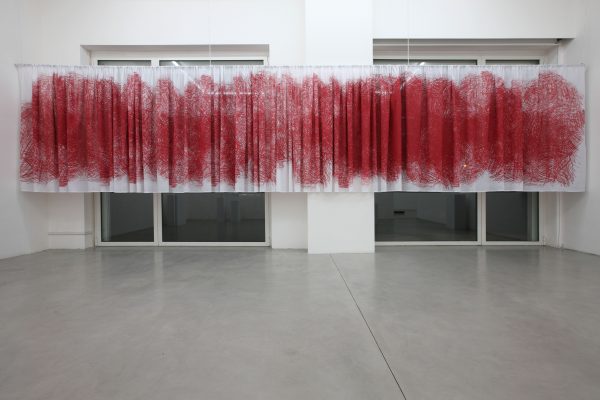 Courtain for Louisiana (No More Moore), 2008Silkscreen, polyester
Courtain for Louisiana (No More Moore), 2008Silkscreen, polyester
180×1800 cm
















































